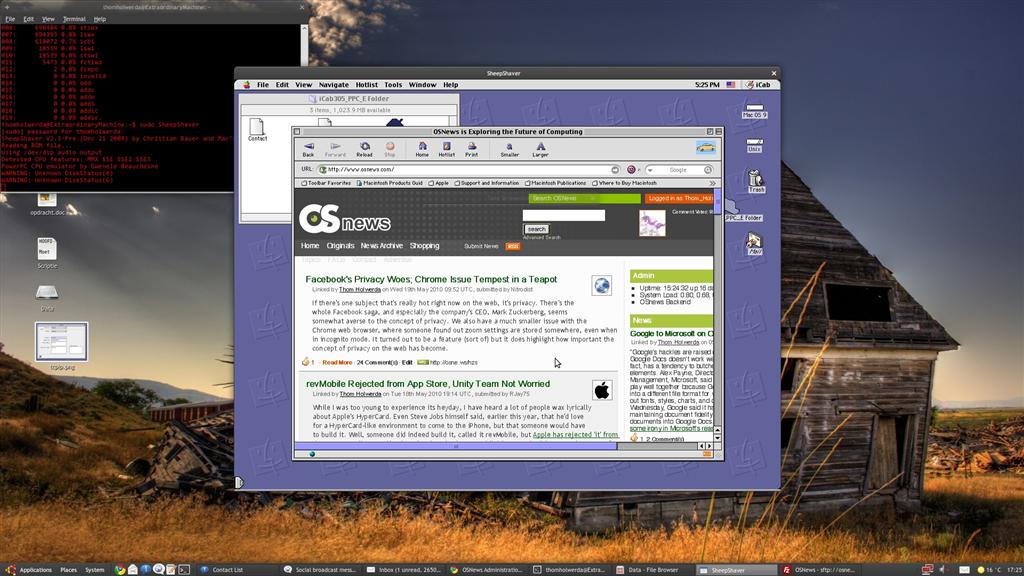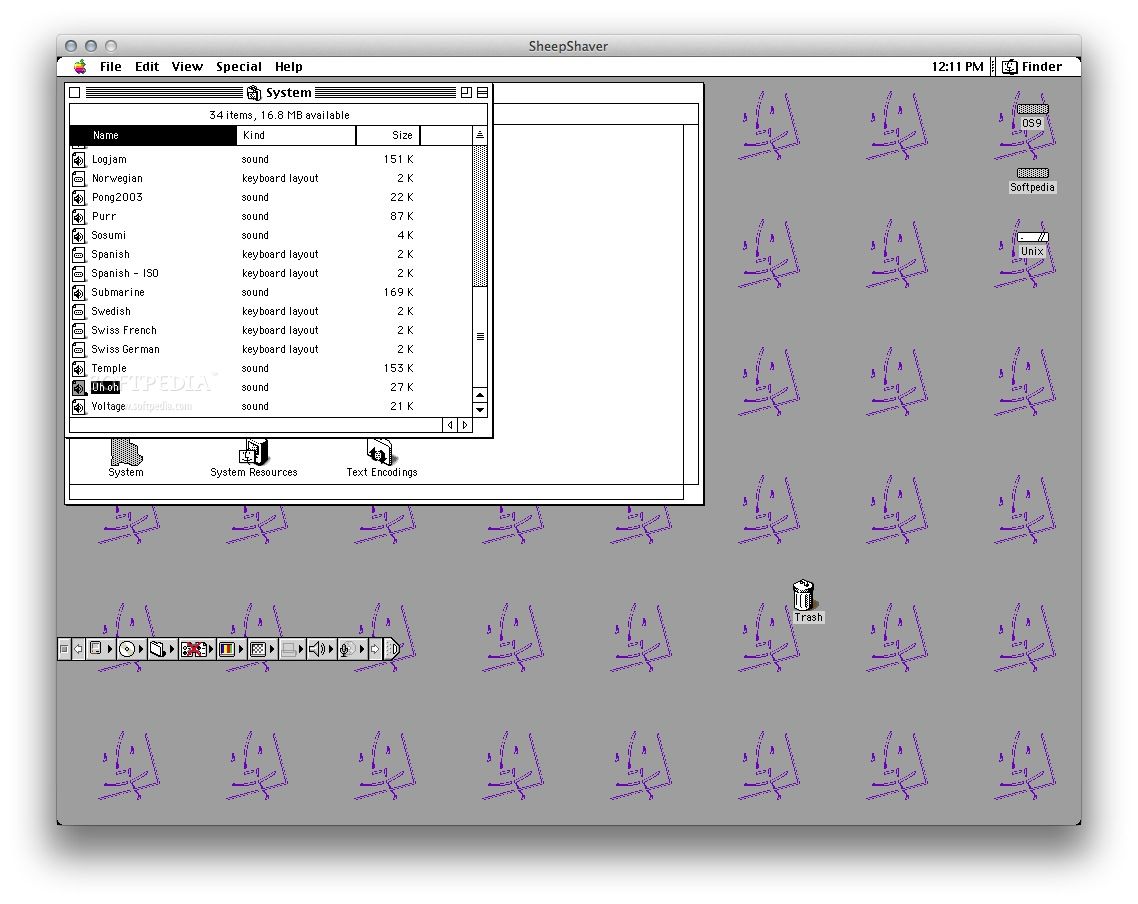

The most optimistic thing it tries to do is emulate the sound hardware (which is really primitive and nasty in a Mac Plus), with mixed results.
#SHEEPSHAVER ROM SERIAL#
Last I checked vMac mostly just emulates "stubs" for things like serial ports and SCSI so it perpetually looks like there's nothing attached. I suppose in principle one could reduce startup time by a few milliseconds if you rewrote the code to persistently cache the patched version but I've never seen that.Īlso note that vMac "emulating" hardware is a pretty optimistic way to describe it. The ROM file on the drive is the plain binary image pulled straight off the Mac. BasiliskII just goes further and hacks the video/audio/network drivers as well. Both emulators replace the ROM floppy driver with their virtual disk driver. (Or, in the case of running newer OSes, with a New World ROM image.)Īlso note that the main reason BasiliskII and vMac can't use the same ROM image is because vMac normally emulates 68000-based machines (it *does* have a limited MacII emulation mode now as well) while Basilisk *solely* emulates a 32-bit clean MacII or Quadra.Īnd, also, technically speaking, vMac also patches the ROM. (It doesn't like Powerbook, Quadra AV, or Quadra 580/630-family ROMs.) Same goes for Sheepshaver, which will run with varying degrees of success with ROM files from most beige PCI Power Macs.


Basilisk does only work with a limited selection of Mac ROMs and some work better than others (most people use a 1MB ROM from a specific Performa model and that is often linked off the howto sites) but that selection does include most 32-bit-clean Mac II family, LC, and Quadra ROMs. Yes, they do heavily patch the ROM, but they do it at runtime.


 0 kommentar(er)
0 kommentar(er)
